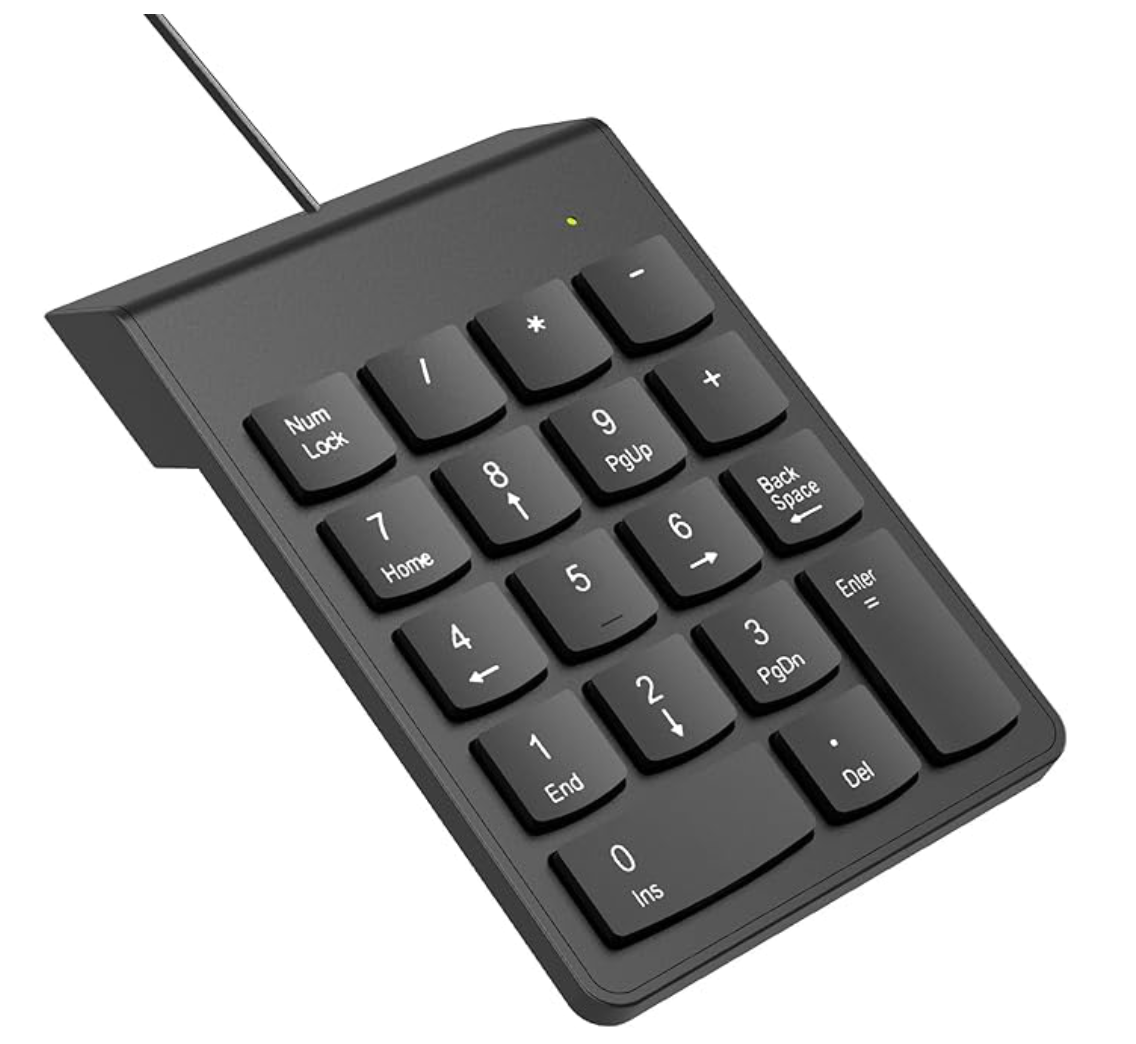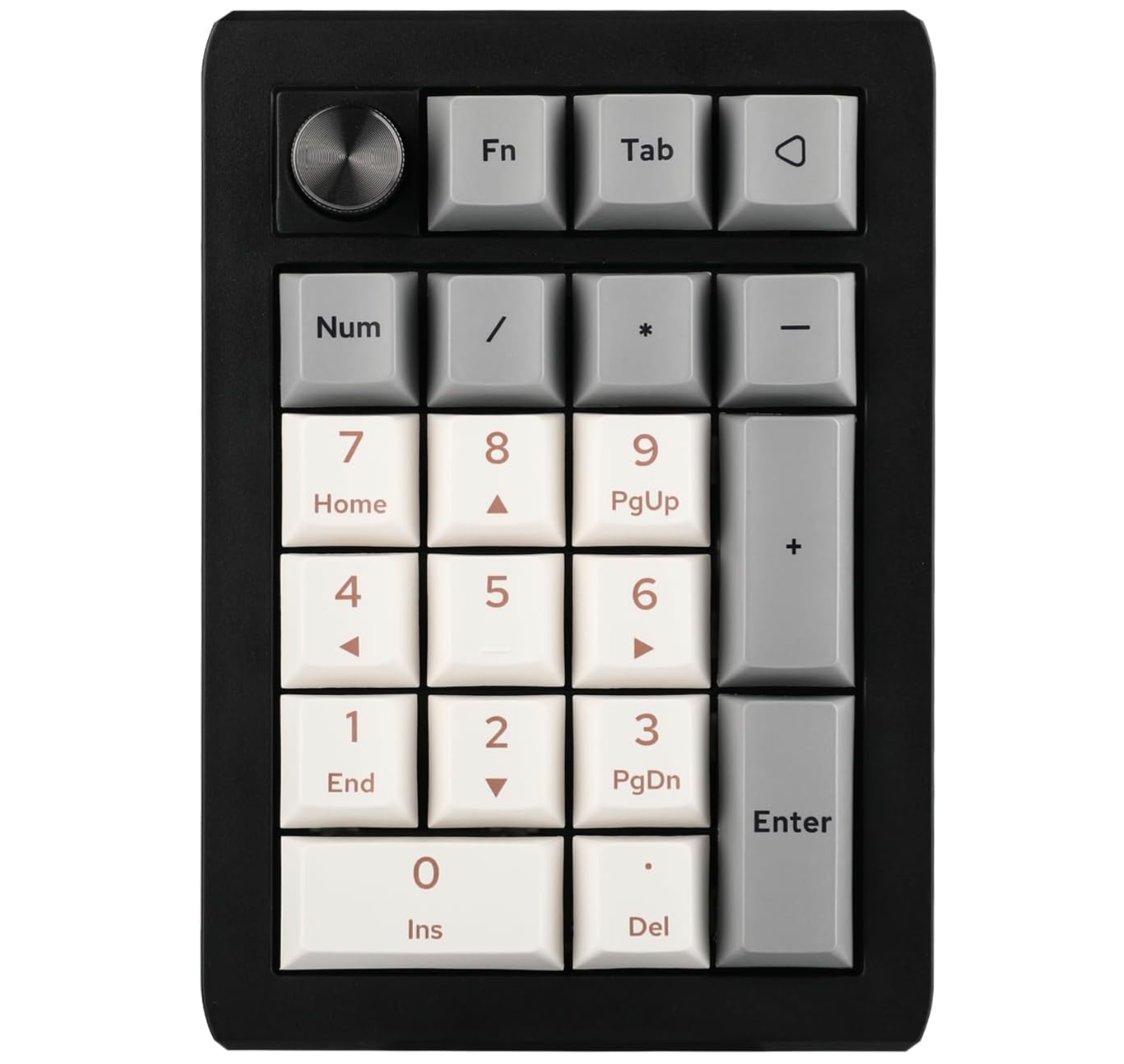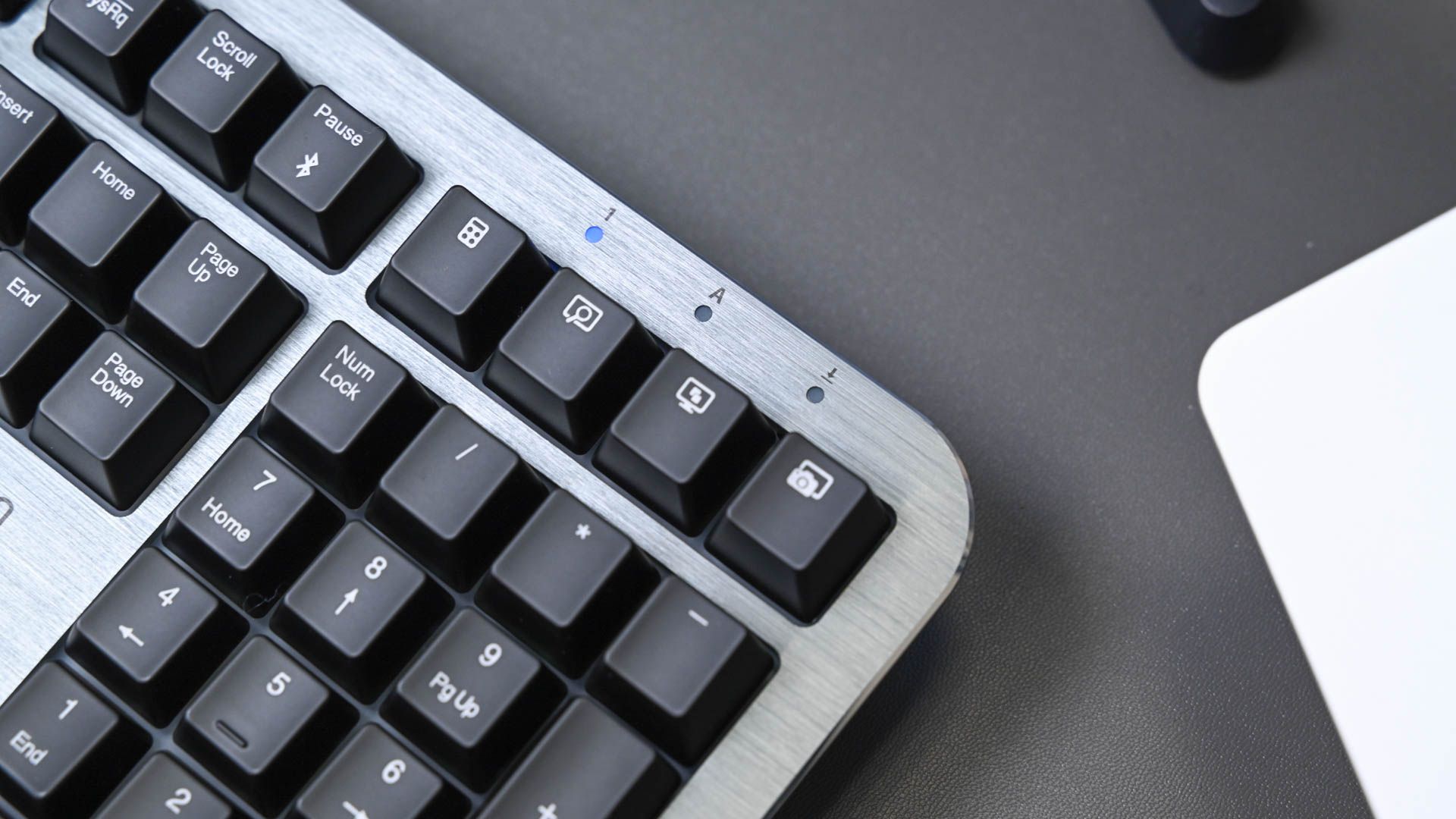Key Takeaways
- The numpad’s traditional right-handed location forces you to contort your body in un-ergonomic ways.
- Instead of getting rid of the numpad, we should use one of the left-hand side of our keyboards.
- Buying a tenkeyless keyboard and a standalone numpad gives you the left-hand numpad experience at a low price.
An ergonomic computer setup requires a bit of rule-breaking. You might buy a goofy trackball mouse, for example, or stand at your desk like some kind of heathen. But have you ever tried using a numpad on the left-hand side of your keyboard? It goes against all things natural, but it’s one of the easiest ways to increase your comfort at a desk.
The Traditional Keyboard Layout Is an Ergonomic Mess
Place both of your hands on your keyboard as if you’re about to start typing. If you own a full-sized keyboard, you might notice that your arms and shoulders are pivoted slightly to the left in an uncomfortable fashion. Now, move your right hand over to your mouse—you do this hundreds of times a day, yet you’ve never noticed the massive leap that your hand needs to make.
The traditional keyboard layout is a hidden ergonomic nightmare. It forces you to twist, contort, and make unnecessarily large movements with your body, all in the name of a right-handed numpad. If you place the alphabetic portion of your keyboard at the center of your desk, your mouse will be uncomfortably out of reach. Placing your mouse in a more reasonable position pushes your keyboard to the left, forcing you to type cockeyed.
It’s an absurd, paradoxical ergonomic problem. Still, it’s an easy problem to solve—just get rid of the numpad. A keyboard without a numpad (called a tenkeyless keyboard) can be placed at the center of your desk without disrupting the natural location of the mouse. This is something we’ve discussed in the past, but it isn’t a popular idea among those who actually use their numpad.
So, I’d like to propose an alternative solution. Instead of giving up on the numpad, you should use a numpad on the left-hand side of the keyboard. This gives you the full benefit of a discreet numerical input device without the slow (and potentially debilitating) curse of poor computer posture.
Yes, a Left-Handed Numpad Is Bad in Some Situations
For fear of being jumped by a gaggle of accountants, I must make a sad admission. A left-handed numpad isn’t always a good idea. In fact, it can be a downright terrible idea in some professions, particularly those that involve data entry.
Spreadsheet and accounting software are optimized for keyboard navigation, meaning that someone who spends 40 hours a week in Excel or Quickbooks should rarely reach for their mouse. Instead, they’ll have each hand planted on either side of the keyboard. The left hand slaps away at the Tab key, while the right hand dances around the numpad.

NOOX USB Numpad
$9 $13 Save $4
Experience the comfort of a left-handed numpad with this extremely affordable USB numpad. It doesn’t offer any flashy features and it requires a wired USB connection, hence the low price.
In this situation, the traditional keyboard layout is perfectly ergonomic. Moving the numpad to the left-hand side of the keyboard would make things less ergonomic, as both hands would need to be crammed together, therby forcing the shoulders into the hunched, gremlin-like position that we’re trying to avoid.
If you’re an accountant or data entry specialist, I formally dismiss you from this article. Everybody else needs to stick around and hear my hair-brained, relatively cheap method of setting up a left-handed numpad.
Should You Use a Left-Handed Numpad?
Casual computer users, gamers, and spreadsheet-averse individuals may benefit from a left-handed numpad. However, very few keyboards are built to this unique specification. The only notable exception is the Keychron Q12, a keyboard for those with a healthy bank balance and an unrestrained, pigeon-sized brain—I only fit the latter criteria.
Anyway, let’s forget about the Keychron Q12 and go for a more affordable, more flexible option. You’ll need just two items: a tenkeyless keyboard and a standalone numpad. These two purchases will add up to as little as $40, though you could easily spend $100 or more, depending on what you buy.
A tenkeyless keyboard is just a regular-old keyboard without a tenkey number pad. The term “standalone numpad” should be sufficiently self-explanatory, so I’ll let you figure that out on your own. Place the tenkeyless keyboard on your desk, set the standalone numpad next to it, and enjoy the cozy life of a left-hand numpad user.
This goes without saying, but a standalone numpad can sit anywhere on your desk. You can always move it to its traditional right-handed location when filling out a spreadsheet or doing other number-intensive work. And, if you decide that you hate using a left-handed numpad, you’ll still benefit from the ability to take the numpad off your desk when it isn’t needed.
Standalone numpads come in all shapes and sizes. Some are cheap and simple, while others use mechanical switches and have customizable knobs or buttons. You can also choose between some wired or wireless options, though I should warn that the ultra-cheap wireless numpads don’t have a power switch and will devour AA batteries.

EPOMAKER EK21 VIA Wireless Number Pad
The EPOMAKER EK21 numpad sports a premium design with hot-swappable Gateron Pro Yellow switches, VIA macro customization, and RGB backlighting. It connects via USB-C cable, 2.4Ghz wireless dongle, or Bluetooth 5.0, and it features a long-lasting 1,000mAh rechargeable battery.





